Gayle steps into Scotland’s Celtic past with a hike up to a mysterious rock formation in Glen Lyon known as the Praying Hands of Mary.
It was a rather dreich but warm summer’s evening when I set out on a mission to find the evocatively-named Praying Hands of Mary.
Deep in the heart of Glen Lyon, the Praying Hands is a mysterious rock formation consisting of two huge stones that rise together as if they were hands in prayer.
Also known as Fionn’s Rock, it was said to have been split in half by an arrow fired by the legendary Celtic hero Fingal, or Fionn mac Cumhaill (Finn McCool).
It’s a joy to explore Glen Lyon, Scotland’s longest enclosed glen, running for 34 miles from Loch Lyon in the west to the village of Fortingall in the east.
Apart from a few scattered farms and cottages, the only real settlements are at Fortingall and Bridge of Balgie, which, by the way, boasts a fantastic tea room – the cakes are to die for.
Certainly it’s no surprise that Sir Walter Scott once described Glen Lyon as the “longest, loveliest and loneliest” in Scotland.
Praying Hands
Having spotted a blog about the Praying Hands, and spoken to a local lady who’d celebrated the summer solstice there (I’m pretty sure a lot of booze was consumed as she and her friends sung and danced round the formation, touched it and did whatever else folk do at such rituals), I was keen to check it out for myself.
Would I be able to feel the power of the stones, I wondered? Would I be transported into another dimension, a la TV drama Outlander?
Parking near the tiny hamlet of Camusvrachan, I followed a path over a bridge and turned right towards a group of old stone cottages at Balmenoch, passing a glassy-surfaced fishing loch on the way.
A rough track led me up Gleinn Da-Eigg from a pretty whitewashed cottage at Balmenoch, with the crystal-clear Allt a’ Chobhair cascading over a series of waterfalls to my left.
As I made slow progress up the steep-ish incline, I spotted a cluster of ruined houses and a roofless old byre in which two Highland ponies were sheltering.
Not being able to resist, I strolled up to the handsome beasts, one of which was friendlier than the other. It was a chance to catch my breath and have a cuddle.
Views of distant mountains
By this time, the drizzle had stopped and while the sun wasn’t exactly bursting through the clouds, the views of distant mountains were improving.
I traipsed uphill, full of anticipation, until finally I got my first sighting of the impressive split-rock, the pointed tips appearing over the crest of a heathery hill.
The best view, in my opinion, is gazing down on the Praying Hands from above, taking in the vast spread of glen before you.
I hung out there, drinking in the peace and atmosphere for a good hour… until midges got the better of me.
Before I left, however, I made sure I touched the stone in several places and, in my own, non-religious way, prayed for good fortune. Silly? Maybe. But nobody was watching, apart from a few curious sheep.
Photographer’s dream
The Praying Hands are a photographer’s dream, or perhaps nightmare. I’m no photographer and grabbed whatever photos I could, given the misty, mizzly weather, but I’ve heard tales of professionals heading up there time and again in search of the “perfect” shot, with the light striking the rock in the right spot and so on. Good luck to them.
Some reckon late afternoon or early evening on a sunny day affords the best opportunity for a cracking photo, when the light floods east down Glen Lyon.
Even if you come away with amateur pictures, as I did, there’s no denying the striking nature of the Praying Hands – they have a major impact visually, and yes, I admit it, emotionally.
Keen hikers can extend the walk into a nine-miler starting from Bridge of Balgie, passing the Praying Hands, and heading round the Corbett of Meall nam Maigheach but it’s quite a trachle from what I’ve read, with the hill itself being pathless and very boggy in sections.
My excuse for not doing this? I’d already scaled a Munro in the rain that morning – 932m Meall Buidhe – and my legs had had enough.
It took me about 40 minutes to reach the Praying Hands from Camusvrachan, but I stopped quite a few times. Heading back is of course easier as it’s all downhill.
- Fionn mac Cumhaill was a hero in Irish mythology, as well as in later Scottish and Manx folklore. He was leader of the Fianna bands of young roving hunter-warriors, as well as being a seer and poet. He is said to have a magic thumb that bestowed him with great wisdom. He is often depicted hunting with his hounds Bran and Sceolang, and fighting with his spear and sword.
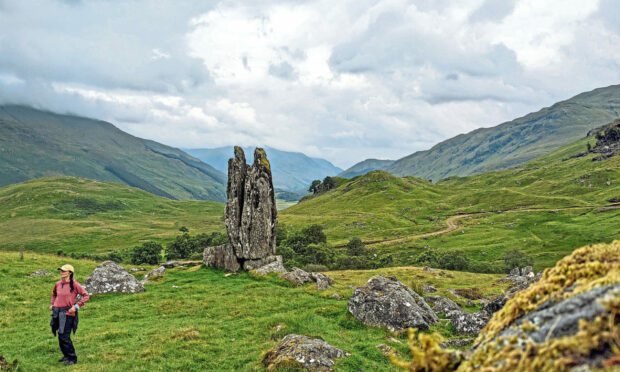
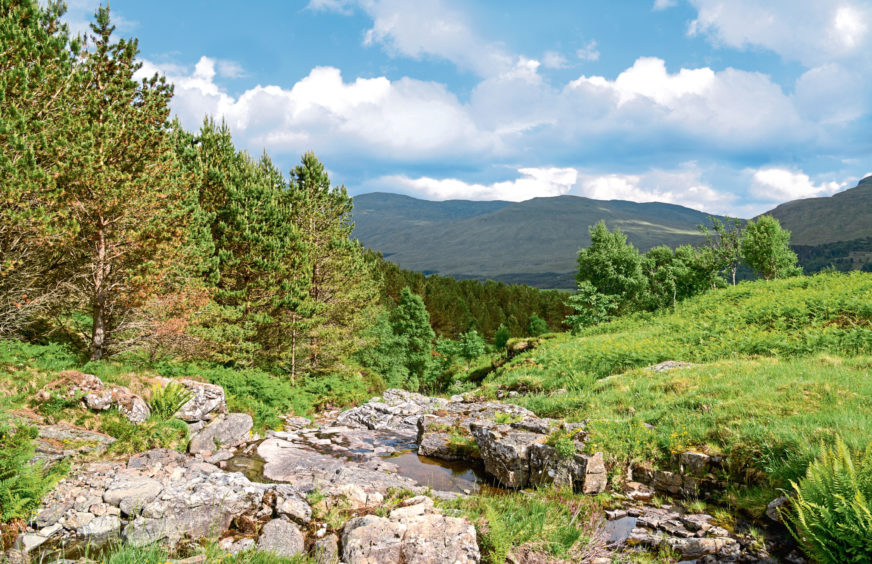
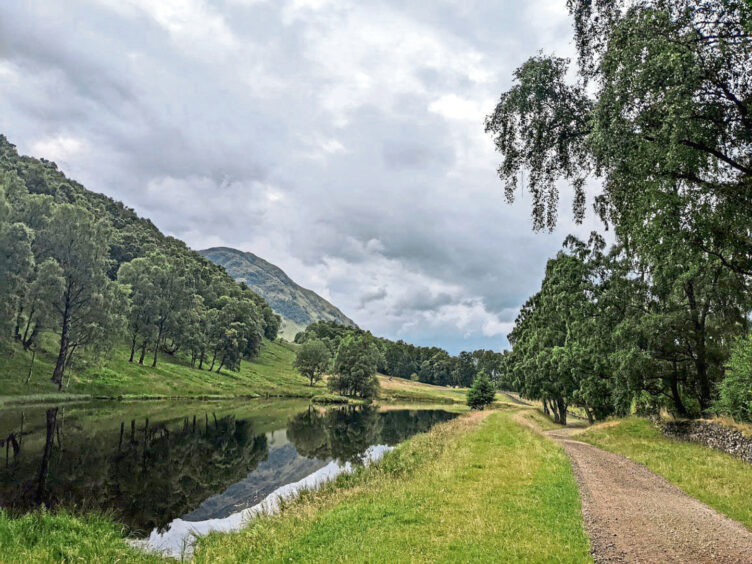
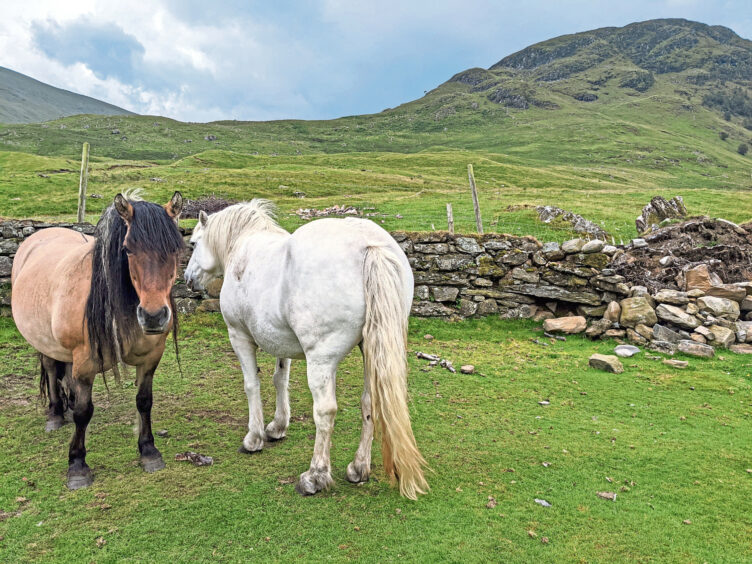
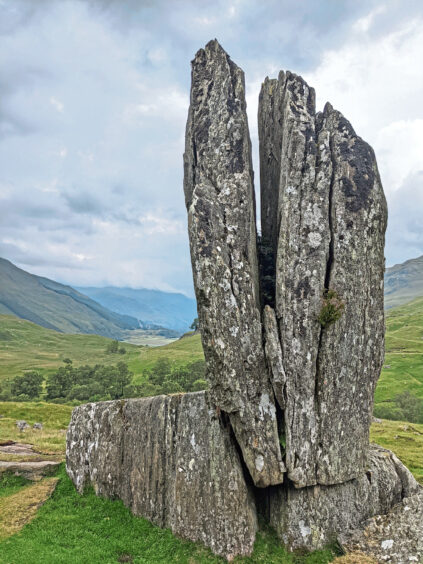
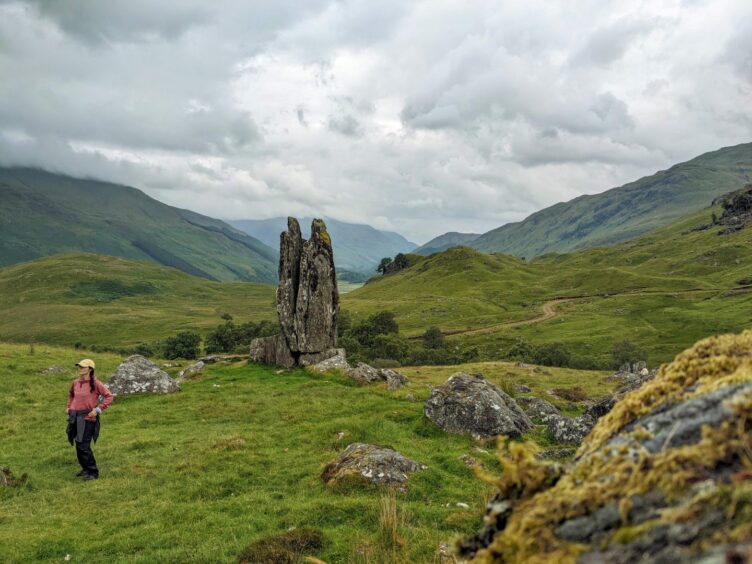










Conversation